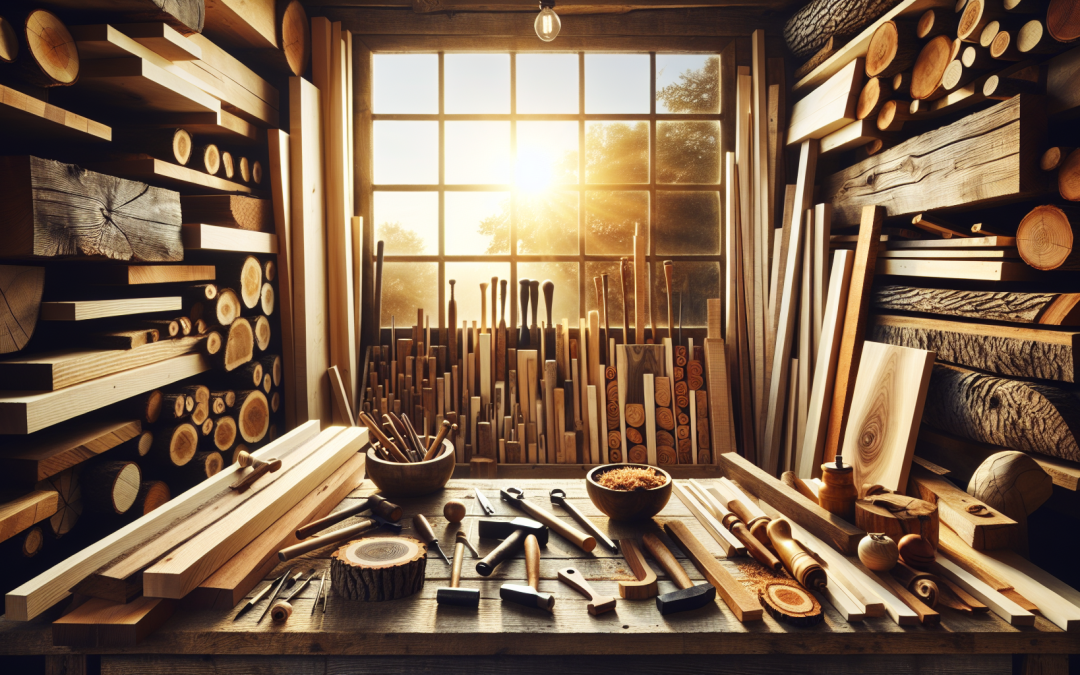Fine-tuning the art of drying wood is a pivotal step in woodworking – an element that can dramaticalter the final product’s durability, appearance, and longevity. Learning how to properly dry wood is like crossing a critical bridge on the road to becoming a seasoned woodworker, but it’s important to remember that every board has a story, and wood reacts differently to varying conditions.
1. Understanding Moisture Content and its Impact
The moisture residing within the wood can influence the strength, weight, workability, glue-bond integrity, and even the susceptibility of the wood to fungal growth. Misjudging the movement of wood can lead to warping, shrinking, and other undesirable outcomes. As detailed in our post on wood movement science, expansion and contraction are natural processes of moisture absorption and release within the wood. Recognizing how different species of wood react to these processes can be instrumental in selecting the best material for your project.
Wooden objects crafted from lumber that’s too moist can shrink, crack, and warp as it dries. Those made from excessively dry wood may expand during a humid season, triggering joinery failures or surface distortion. To anticipate this, it’s crucial to consider the influence of climatic conditions on the drying process.
2. Selecting the Appropriate Drying Method
When it comes to wood drying, there’s no one-size-fits-all solution. The chosen method ultimately depends on several factors, including your available tools, the type of wood species, the desired project, and even the climate. Traditional air drying and kiln drying are two predominant methods employed by woodworkers.
Air drying is a slow and gentle process that minimally influences wood properties. Though it’s cheaper and more energy-efficient, it’s not suitable for all wood types and can be greatly influenced by weather conditions. Meanwhile, kiln drying is quicker and more controlled, allowing for a faster turnaround time for projects. However, it requires more equipment and energy.
Determining which method to use can be a daunting decision, but understanding your project requirements, budget constraints, and patience levels can guide you towards the most suitable path.
3. The Role of Relative Humidity in Wood Drying
Think of your perfect woodworking project. Ranging from a simple yet elegant DIY wooden music box to an intricate masterpiece involving unique wood inlay techniques, the drying process remains the critical foundation in all these instances. And within that process, relative humidity (RH) is a keynote player.
Relative Humidity refers to the water vapor’s partial pressure in the air, compared to the highest possible partial pressure of water vapor with the same air temperature. When the RH is high, drying is slow as the air has little room to absorb more moisture. On the other hand, when the RH is low, drying is quicker as the air can take up more moisture.
4. Key Tips for Successful Wood Drying
Successful wood drying is a skill that you adopt through experience, but there are important tips to follow:
- Choose the drying method that best suits your specifications and constraints.
- Understand the moisture content of your wood thoroughly before starting.
- Be patient. Rushing can lead to disappointing results.
- Material selection is critical, so understand the properties and behavior of different wood species in varying climatic conditions.
5. Achieving Greater Mastery after Understanding Drying Techniques
Mastering the art of wood drying is merely a milestone on your woodworking journey. It propels you towards other aspects of woodworking, such as the mastery of precision cuts, as detailed in our precision cut’s master guide, or exploring the unique properties of traditional woodworking tools, as found in our feature on reviving traditional tools. This acquired skill not only elevates your woodworking standards but also opens up endless opportunities for you to innovate and create stunning masterpieces.

